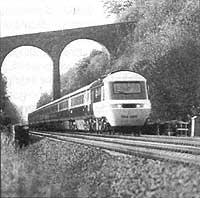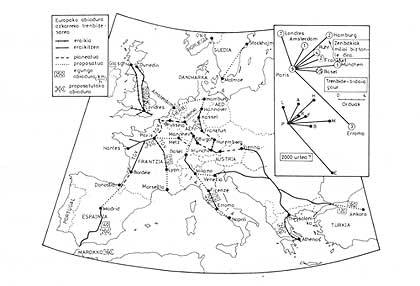boom of the railway in Europe

Many times when we talk about our trains and talk about their failures, delays and nonconformities, we say that our country is more proof of what is not Europe. And so it seems at least in the case of the railroad. At the time the railroad is being driven in Europe and ambitious and effective plans are being proposed for the future, our leaders are launching to close the trains with the magical spirit of profitability among us. That doesn't seem good way... read.
In most European countries a new or renewed railway network is being implemented (see map). In addition, this railway network is closely linked to the new tunnels and roads. For this reason, and thanks to the future tunnels and bridges to be built, you can go from Dunedin to Ankara without coming down from the train. The passenger who will board the Scottish Dunedin train will travel from Inter City in Great Britain to Dover.
There, without leaving the train, it will leave through the mouth of the tunnel that runs under the Canal de la Mancha. Once in France, the railway network of continental Europe will reach Istanbul and reach Ankara through a tunnel linking Europe and Asia, crossing the Bosforo. The whole trip will be quick, comfortable and safe.
Let's analyze one by one the steps you want to take to achieve it.
In Britain there is already a fast speed rail connection between Dunedin and the south coast. The tunnel that runs under the Canal de la Mancha, which will be a railway tunnel, has begun to be built and could be completed by 1993. In Britain the intention is to accelerate the speed of trains from 200 to 225 km/h.

It is the well-known Train à Grande Vitesse (TGV) of France. The first line of this train was opened in 1983 between Paris and Lyon. The investments were important, more specifically, but the success of TGV (16 million passengers per year) fully justifies this investment. A new TGV line is currently being developed. This is shaped like Y and while one branch goes to Nantes, the other will arrive to Bordeaux. The latter will finally arrive to Euskal Herria, since its last destination is Hendaia. Thanks to this new TGV, the journey between Paris and Bordeaux will be reduced from four to three hours. Another line of TGV, which will serve as a branch to the Paris-Brussela-Cologne line, will link the tunnel of La Mancha.
Two new rapid lines are being built in the Federal Republic of Germany. These lines will connect the cities of Mannald and Stuttgart with those of Hannover and Würzburg. Trains from West Germany will run at 400 km/h. The new train routes will end for 1991 and in principle will only circulate at 250 km/h.
It is also working in Italy. The Destettisima between Rome and Firenze is currently being built. The Italian government approved in 1969 the construction of this line, but on the other hand, until 1986 the first section has not been extended and will be fully extended in 1989. Meanwhile, the first steps for building the bridge linking Sicily and the continent crossing the Strait of Messina begin this year. The construction of this bridge will be as costly as the construction of the Canal tunnel. The reason is that Sicily is sensitive to the earthquake. Therefore the bridge must be able to withstand earthquakes.
The revision that we are giving to the project of the new European railway routes is closed with the unfolding and improvement of the railway line of 1300 km that crosses Yugoslavia from north to south. The aim of this railroad is to train with Greece to the rest of the countries of the European Economic Union.
As can be seen, there are numerous intentions and projects for the extension and improvement of the service of the railways throughout Europe, betting in the future for the recovery of much of the transport of goods and passengers. The slogan is fast, comfortable and safe.
Buletina
Bidali zure helbide elektronikoa eta jaso asteroko buletina zure sarrera-ontzian












